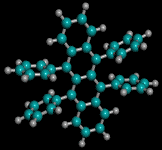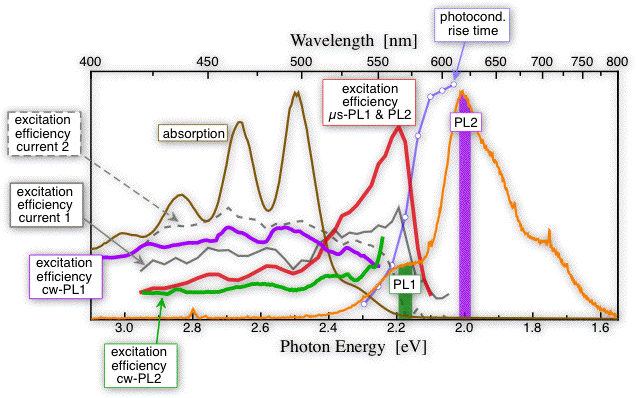| Physics Department | Center for Photonics and Nanoelectronics | Lehigh University |
 |
The various kinds of excitations created by light in matter can be studied using short (picosecond) light pulses that confine the photoexcitation process to a moment in time and allow the observation of the dynamics of the photoinduced effects on time scales from nanoseconds to seconds. An example of photoexcitation is the creation, thorough the promotion of an electron (or a hole) to an energy band where it is mobile, of a finite photoconductivity in a sample. The pulsed excitation allows the observation of photoconductivity transients even in cases where the contacts are weakly conducting, or for small photoconductivities that could not otherwise be observed under continuous wave illumination. The photoconductivity transient and its features (its amplitude and kinetics) can then be studied as a function of the energy of the photons that lead to the creation of free charges. From this it is possible to extract excitation spectra that give important insights into the nature of the primary photoexcitation (the nature of the first excited state reached by the system upon absorption of a photon) in the material that we study. Photoexcitation into higher states can also lead to photoluminescence when the system moves back to its initial state, and the photoluminescence transient also contains relevant information on the nature of the excited states, and can be used as an observable to measure photoexcitation spectra.As an example, we recently applied this technique to a molecular crystal. The interest for doing this comes from the fact that the nature of the primary photoexcitation in organic crystals is still the subject of some controversy in the field, and also from the need of studying the properties of a novel new material for organic electronics and optoelectronics, the rubrene molecular crystal that has been successfully used for single-crystal organic field effect transistores in the group of Prof. Gershenson at Rutgers university. 
The figure above shows the different kinds of spectra that can be obtained by applying these photoexcitation techniques to a rubrene single crystal. From the shape of these spectra and by comparing them with each other we have been able to identify several alternate photoexcitation mechanisms in rubrene that involve different kinds of vibronic and frozen lattice transitions and different kinds of excitons. One of the results of this work has been the observation that it takes several microseconds after photoexcitation (up to 100 at long photoexcitation wavelengths) before a sizeable photoconductivity appears. By comparing the onset of the photoconductivity and the photoluminescence we have been able to show that the creation of free charge carriers happens through a long lived intermediate state that is reached from the free exciton state. References:
|
| Contact | Goto Top of Page |